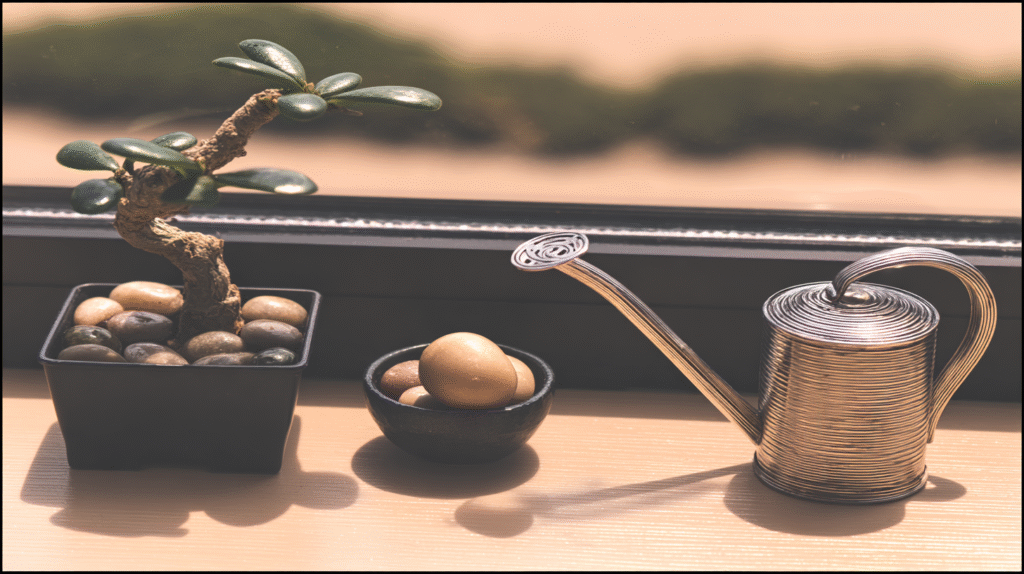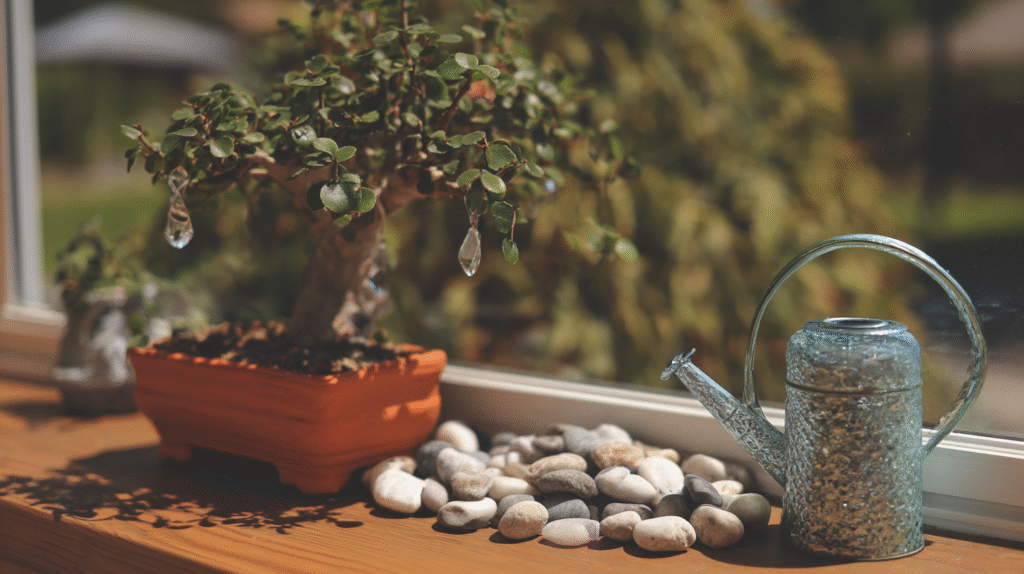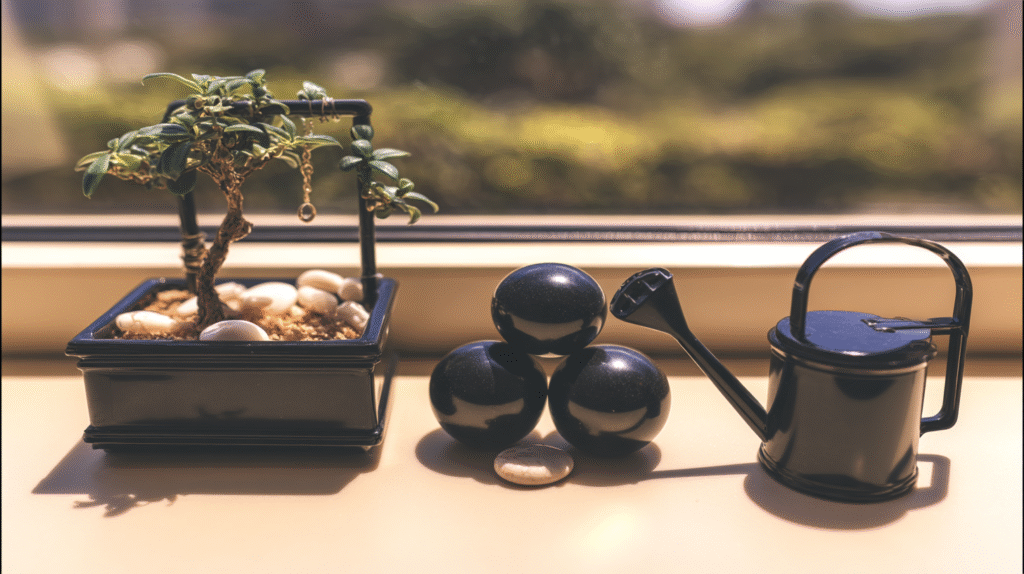My first bonsai was dead within three weeks. A beautiful $65 juniper from a fancy garden center, murdered by my combination of ignorance and overthinking. My second one lasted six weeks. The third made it two months before I finally admitted I had no clue what I was doing.
Seven years and roughly twenty dead trees later (yes, I kept trying), I finally have five thriving bonsai that people actually compliment. The difference? I stopped believing the romantic BS about bonsai being “ancient art requiring decades of study” and started treating them like what they actually are – trees in pots with specific needs.
Here’s everything I wish someone had told me straight up when I started, without the mystical nonsense or overwhelming technical jargon.

The Biggest Lie: “Bonsai Are Indoor Plants”
This single misconception has probably killed more bonsai than all other mistakes combined. Here’s the truth that’ll save your tree:
Most bonsai need to live outside.
That juniper at the mall kiosk? Outdoor plant. The pine at Home Depot? Outdoor. Even that cute ficus needs way more light than your living room provides.
My dead bonsai graveyard was mostly trees I tried to keep indoors. Once I accepted they needed to be outside, my success rate skyrocketed. If you can’t keep a tree outdoors, get a tropical species or accept you’re playing on hard mode.
The Watering Truth That Changes Everything
Forget every watering schedule you’ve read. “Water every three days” is nonsense that’ll either drown or desiccate your tree. Here’s what actually works:
Check your bonsai every single day.
Not every other day. Not when you remember. Every. Single. Day.
The finger test:
Stick your finger into the soil about an inch. Still moist? Don’t water. Starting to dry? Water thoroughly until it runs out the drainage holes.
In summer, I water some trees twice daily. In winter, maybe once a week. The schedule changes with weather, pot size, tree species, and a dozen other factors. Daily checking is the only reliable method.
The water mistake that killed three of my trees:
Using the ice cube method some blog suggested. Ice cubes don’t provide enough water and shock the roots. When you water, water properly – think rain shower, not ice melt.

Placement: Where Your Bonsai Actually Wants to Live
After killing trees in “perfect” spots, here’s what I learned:
Outdoor Bonsai (Junipers, Pines, Maples):
- Morning sun, afternoon shade is ideal
- Protection from extreme wind
- Never inside, even in winter (more on this later)
- On a bench or table, not the ground
Indoor Bonsai (Ficus, Jade, Chinese Elm):
- Brightest window you have
- Rotate weekly for even growth
- Away from heaters/AC vents
- Consider a grow light (seriously)
My healthiest outdoor bonsai sits on a bench that gets sun until noon, then bright shade. The one that struggled for years was in full sun all day – even sun-loving species can get too much.
The Soil Secret Nobody Explains Properly
Regular potting soil will kill your bonsai. I learned this after losing two beautiful maples to root rot. Bonsai need soil that:
- Drains fast (water should run through immediately)
- Holds some moisture (but not too much)
- Allows air to reach roots
What actually works:
- Akadama, pumice, and lava rock (the traditional mix)
- Or: Turface, pine bark, and perlite (cheaper alternative)
- Ratio depends on your climate and watering habits
I killed trees with regular potting soil, sand, and “cactus mix” before finally investing in proper bonsai soil. It’s not cheap, but it’s cheaper than replacing dead trees.
Feeding: The Underexplained Essential
Nobody told me bonsai need WAY more fertilizer than regular plants. They’re in tiny pots with limited soil – nutrients disappear fast.
My feeding routine that works:
- Liquid fertilizer weekly in growing season (spring/summer)
- Half-strength is safer than full
- Reduce to monthly in fall
- Nothing in winter for outdoor trees
- Year-round for tropicals (reduced in winter)
I use basic balanced liquid fertilizer, nothing fancy. The expensive “bonsai food” works the same as regular plant food at triple the price.
The Tools You Actually Need (And the Ones You Don’t)
Instagram bonsai people have $500 tool sets. Here’s what I actually use after seven years:
Essential:
- Sharp scissors (even kitchen scissors work initially)
- Chopsticks (for repotting and checking soil)
- Wire (aluminum, various sizes)
- Watering can with fine nozzle
Nice to have but not vital:
- Concave cutters (for cleaner cuts)
- Root rake (chopstick works fine)
- Bonsai-specific scissors (they are nicer)
I killed trees while owning zero proper tools. I’ve kept trees alive with just scissors and wire. Tools don’t make the bonsai artist – understanding your tree does.
Seasonal Care: The Cycle Nobody Explains Clearly
Spring:
Trees wake up hungry. Increase watering and start fertilizing. This is prime time for repotting and heavy pruning.
Summer:
Water constantly. I mean it – check twice daily in heat waves. Protect from extreme afternoon sun. Keep fertilizing.
Fall:
Reduce fertilizing. Let outdoor trees experience the temperature drop – they need it. Prepare winter protection.
Winter:
The most misunderstood season. Outdoor bonsai NEED winter dormancy. They don’t come inside! I killed three trees bringing them in “to protect them.” They need cold (but protection from freezing winds and extreme temps).
My winter setup: Trees on the ground, mulched around pots, against a north-facing wall. They get cold but not wind-blasted.

Pruning and Shaping: Start Simple
Forget the complex wiring diagrams. Start with:
Maintenance pruning:
Pinch or cut new growth to maintain shape. I do this weekly in growing season.
Structural pruning:
Remove branches growing wrong direction. Once or twice a year max.
Wiring:
Start with upper branches, work down. Aluminum wire is forgiving. Remove after 3-6 months before it cuts in.
My first wiring attempts looked like a drunk spider’s web. Now it’s passable. Practice on garden shrubs first if you’re nervous.
Common Problems I’ve Faced (And Fixed)
Yellow leaves dropping:
- Usually overwatering
- Check for root rot
- Improve drainage
Crispy brown leaves:
- Underwatering or sun scorch
- Increase water, provide shade
No new growth:
- Probably needs fertilizer
- Or repotting if it’s been 2+ years
- Could be wrong season
Pests:
- Spider mites love dry trees
- Aphids appear overnight
- Neem oil or insecticidal soap works
- Prevention = healthy trees
The Mental Game: Patience and Persistence
Bonsai taught me patience the hard way. You can’t rush a tree. That “ancient” bonsai at the museum? Someone watered it every day for decades. Your tree won’t look like that next year, or in five years. But it’ll be yours, alive and growing, if you nail the basics.
I’ve made every mistake possible. Overwatered. Underwatered. Pruned at the wrong time. Wired too tight. Kept outdoor trees inside. Used wrong soil. Each dead tree taught me something.
The Simple Truth About Bonsai
It’s not mystical. It’s not impossibly complex. It’s horticulture in a pot with some artistic pruning. The trees that died taught me more than any book or video.
Start with one tree. Something cheap and forgiving (Chinese elm or ficus for indoors, juniper for outdoors). Water it properly. Give it the right light. Feed it regularly. Keep it alive for a full year before buying another.
My thriving bonsai aren’t perfect. They won’t win competitions. But they’re alive, growing, and slowly becoming more beautiful each year. That’s the real achievement – not creating a masterpiece, but keeping a tree healthy and happy in a pot.
The ancient masters started the same way you will – with one tree and daily attention. The only difference between a dead stick and a beautiful bonsai is consistent, informed care over time.
Your tree doesn’t care if you have the right tools or know the Japanese terms. It just wants water, light, food, and someone who checks on it every day. Start there. The art comes later. 🌲






